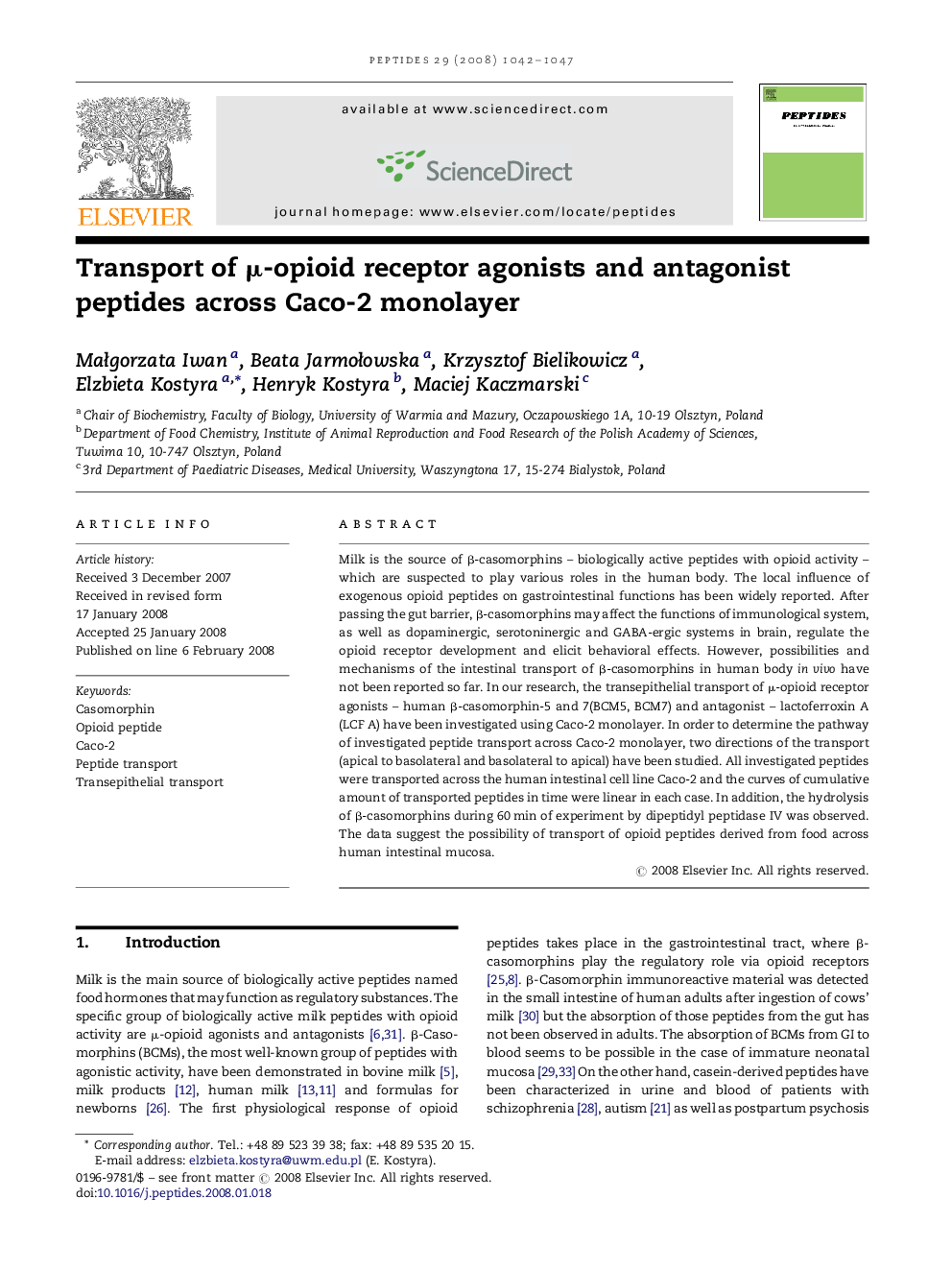| Article ID | Journal | Published Year | Pages | File Type |
|---|---|---|---|---|
| 2008382 | Peptides | 2008 | 6 Pages |
Milk is the source of β-casomorphins – biologically active peptides with opioid activity – which are suspected to play various roles in the human body. The local influence of exogenous opioid peptides on gastrointestinal functions has been widely reported. After passing the gut barrier, β-casomorphins may affect the functions of immunological system, as well as dopaminergic, serotoninergic and GABA-ergic systems in brain, regulate the opioid receptor development and elicit behavioral effects. However, possibilities and mechanisms of the intestinal transport of β-casomorphins in human body in vivo have not been reported so far. In our research, the transepithelial transport of μ-opioid receptor agonists – human β-casomorphin-5 and 7(BCM5, BCM7) and antagonist – lactoferroxin A (LCF A) have been investigated using Caco-2 monolayer. In order to determine the pathway of investigated peptide transport across Caco-2 monolayer, two directions of the transport (apical to basolateral and basolateral to apical) have been studied. All investigated peptides were transported across the human intestinal cell line Caco-2 and the curves of cumulative amount of transported peptides in time were linear in each case. In addition, the hydrolysis of β-casomorphins during 60 min of experiment by dipeptidyl peptidase IV was observed. The data suggest the possibility of transport of opioid peptides derived from food across human intestinal mucosa.
